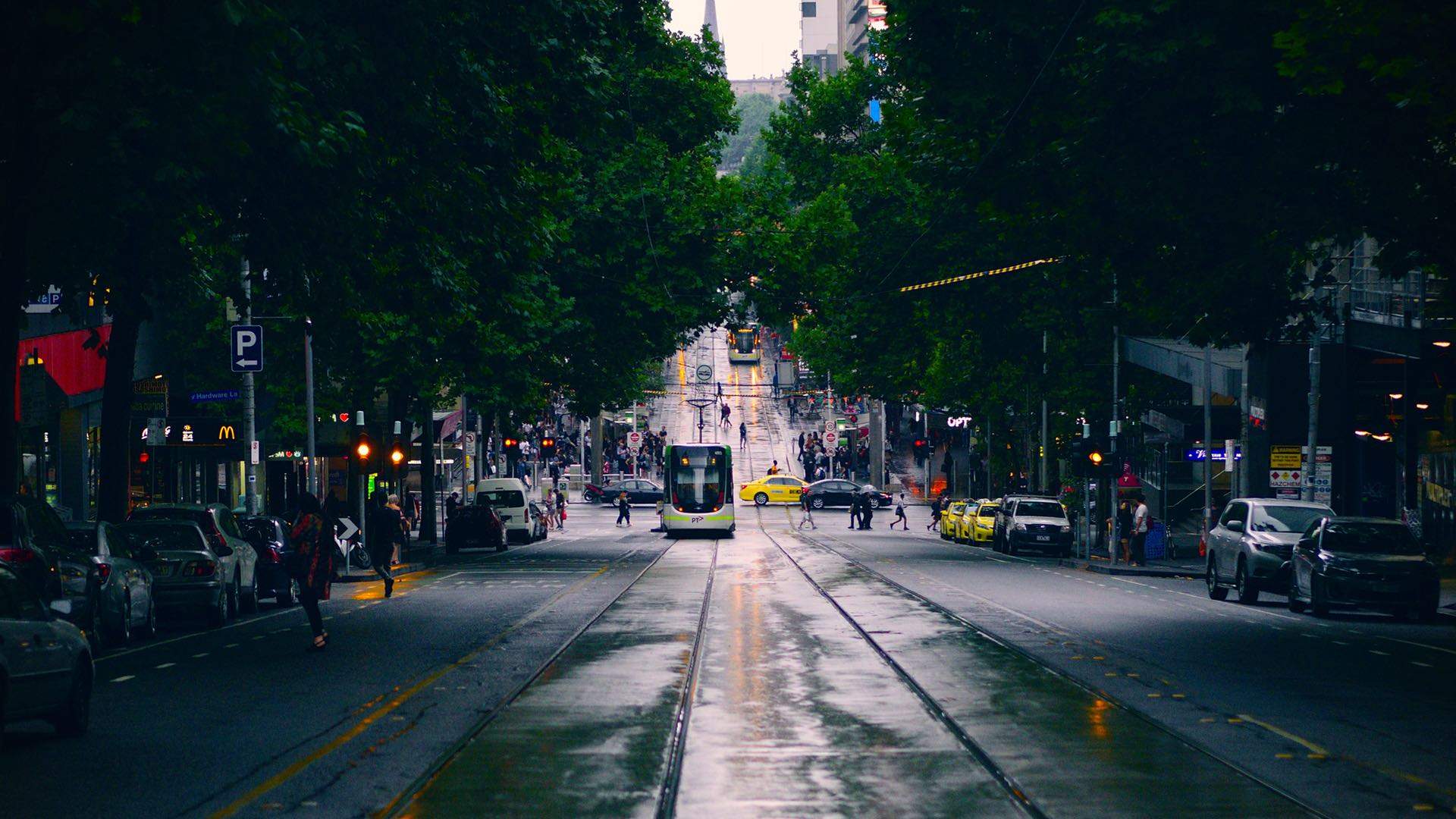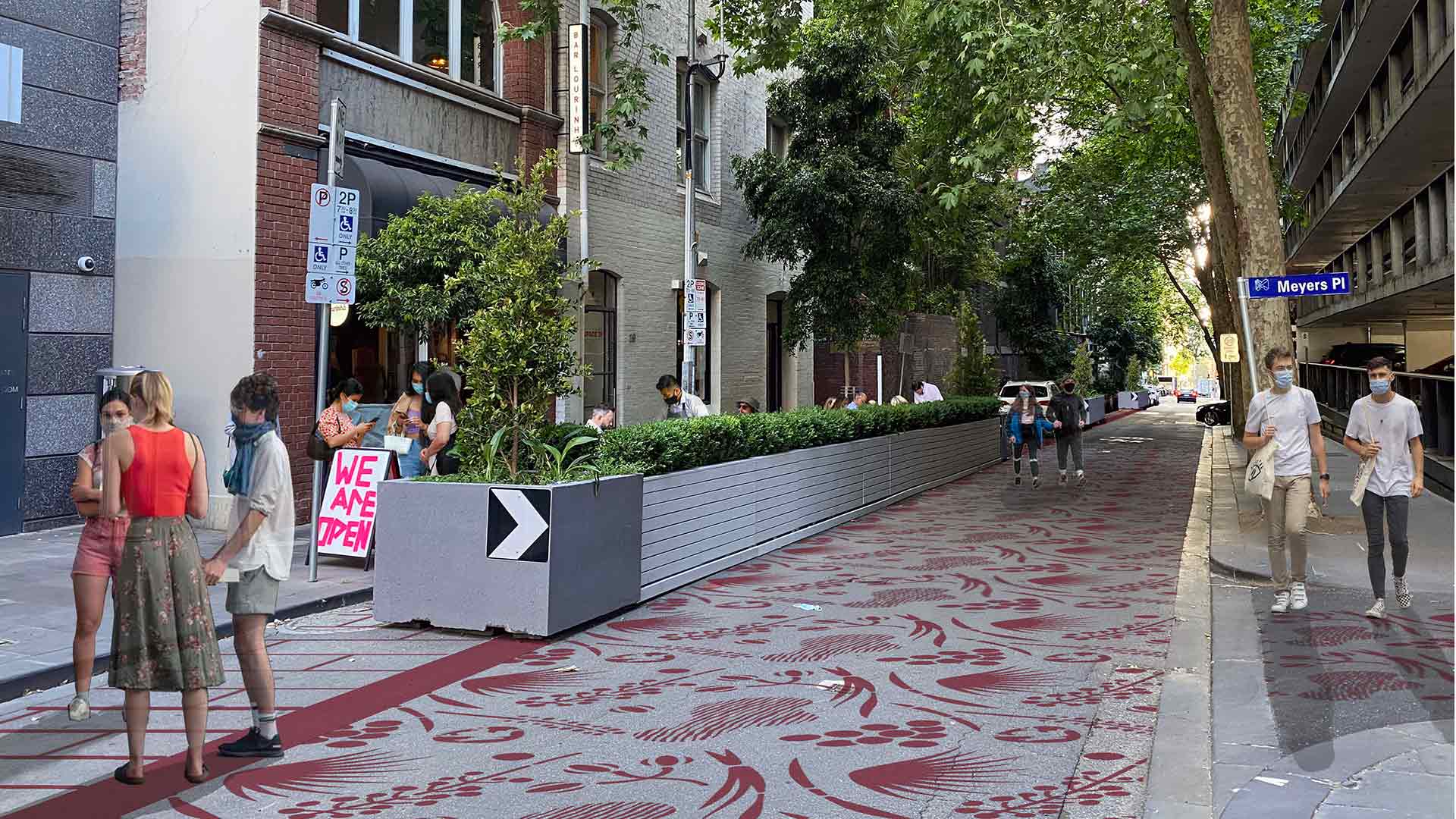Melbourne's CBD Streets Are Getting Kitted Out with Indigenous Flora and Fauna Stencils
They're part of a plan to give the city a pedestrian-friendly boost.
Back in 2019, the City of Melbourne and Lord Mayor Sally Capp announced a plan to help make the CBD friendlier to pedestrians and cyclists, as part of an attempt to reduce city congestion. If folks have more incentive to hit the pavement, the roads won't be as clogged — with that idea driving the Draft Transport Strategy 2030.
Wondering what that looks like in reality? Around 17 inner-city blocks, it's about to look particularly vibrant, actually. The City of Melbourne has just announced that it's stencilling a heap of CBD streets with Indigenous flora and fauna designs, with makeover works in Little Collins Street kicking off before Christmas.
By the end of December, Flinders Lane, Little Bourke Street and Little Lonsdale Street will also start getting a revamp — and each area will have a theme inspired by Melbourne's pre-colonial landscape. So, via stencils from Indigenous graphic designer Marcus Lee, you'll see grasses in Little Collins Street, herbs on Flinders Lane, shrubs for Little Bourke and trees throughout Little Lonsdale. Every block will boast its own individual details, too. And, varying colours will be used to show the different types of vegetation that was prevalent in each area before European settlement, with purples in the west, deep reds in the east and pinks in the middle.
"Creating this artwork pattern provided an incredible opportunity to gain an insight into the natural environment of the Indigenous flora and fauna that existed in these local areas," Lee explains. "In pre-colonial times, traditional Aboriginal cultural practices would have effectively utilised these varying woodlands to provide an abundance of food sources and resources. In depicting the nature of these vegetation classes, my approach to the design integrated elements of their unique characteristics while also balancing a simplified and bold style to enable the patterns to transfer effectively to the amazing Little Streets of Melbourne."
If that doesn't make you want to stroll along the CBD's streets, then a number of other measures might — including adding signs marking shared zones, to make such areas safer for pedestrians; reducing the speed limits in Little Streets to 20 kilometres per hour; and adding speed bumps and planter boxes to also slow down traffic.

For further information, head to the City of Melbourne website.





